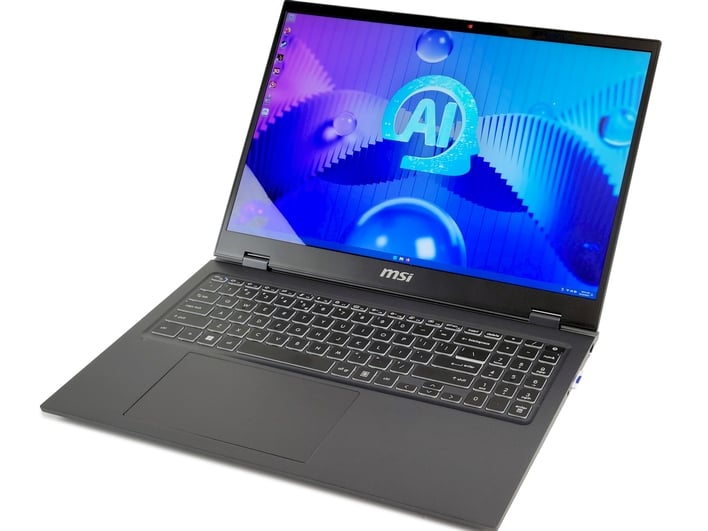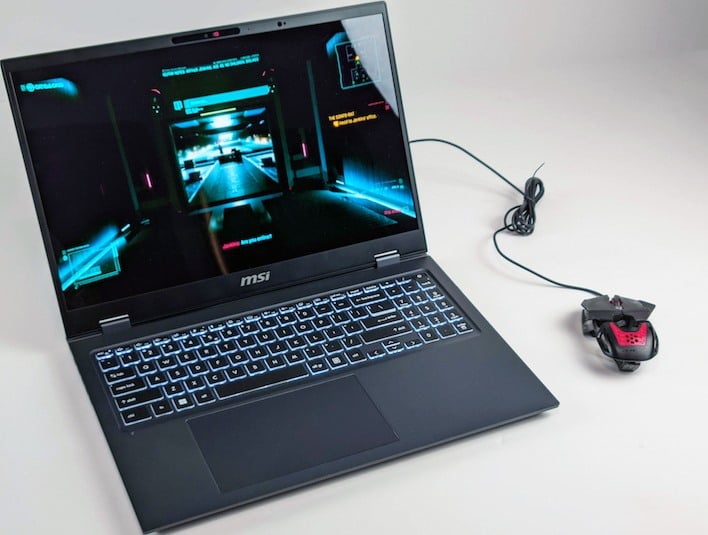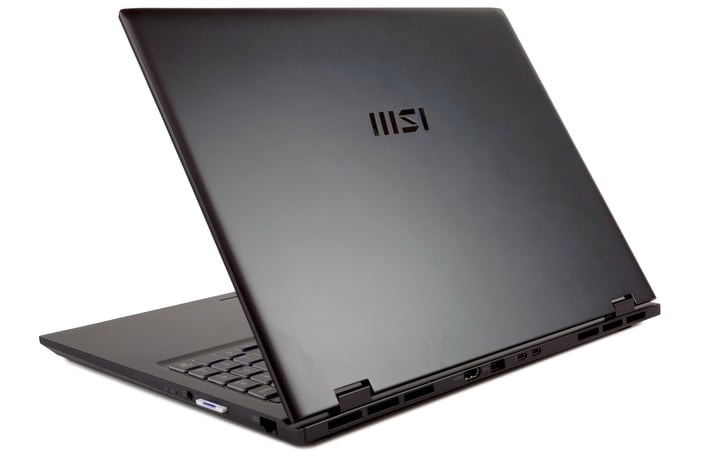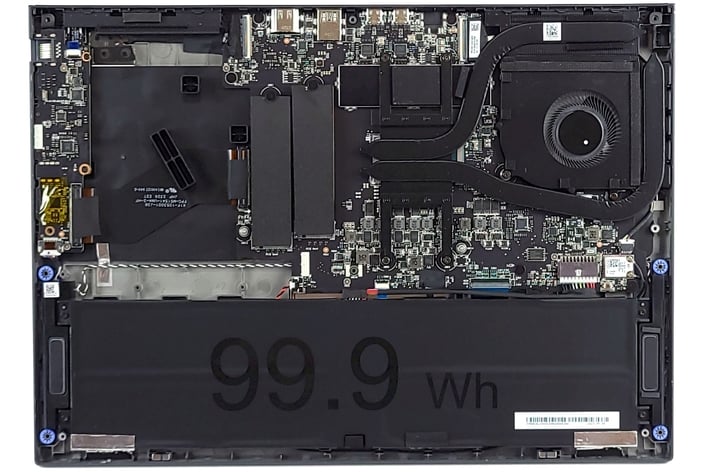Meteor Lake Core Ultra Review: Intel's All New Tile CPU Tested
Rise Of Tiles: We've Put Intel's Meteor Lake Core Ultra CPUs To The Test
Ask anyone in the chip industry, and you'll probably get a similar answer: chiplet-based CPU designs are the way of the future for high-performance, advanced processors, and it's fairly likely that most highly-integrated CPU architectures will be headed that way eventually. Intel obviously agrees, as the company has been deploying disaggregated processors in the datacenter for a while now, but not until last week did we see the launch of modern tiled processors from Intel in the consumer and commercial client device space.
Intel calls its chiplet architecture approach "tiles". Tiles are individual pieces of silicon that serve specific functions of a complete integrated SoC. This isn't like an old-school multi-chip module where OEMs stitched together a bunch of dies on a package substrate. This leading-edge processor design approach is packed with multiple disparate tiles targeted at specific functions and connected with a high-bandwidth interconnect.
Intel calls its chiplet architecture approach "tiles". Tiles are individual pieces of silicon that serve specific functions of a complete integrated SoC. This isn't like an old-school multi-chip module where OEMs stitched together a bunch of dies on a package substrate. This leading-edge processor design approach is packed with multiple disparate tiles targeted at specific functions and connected with a high-bandwidth interconnect.
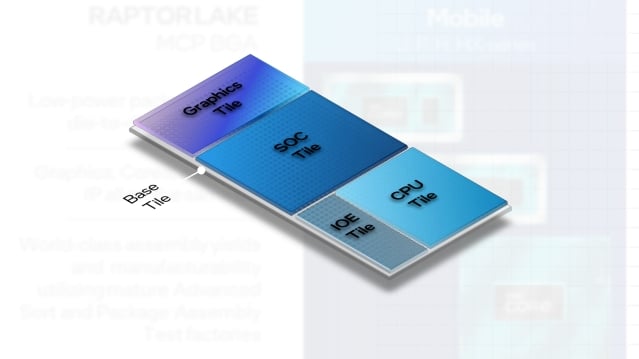
In Core Ultra processors—the chips formerly known as "Meteor Lake"—you get four tiles resting on top of a base tile. These are the Compute Tile, the Graphics Tile, the SoC tile, and the I/O tile. Aside from the base tile that connects them all together, the largest is the SoC tile that includes the processor's "uncore" features, the display engines, the media block, and so on. The Compute Tile contains fourteen CPU cores: eight Crestmont E-cores and six Redwood Cove P-cores. Finally, the graphics tile packs in eight Xe-LPG Cores for a total of 1,024 shaders of GPU compute.
However, perhaps most notable (aside from the move to tiles) is that Meteor Lake also includes an NPU, or Neural Processing Unit.
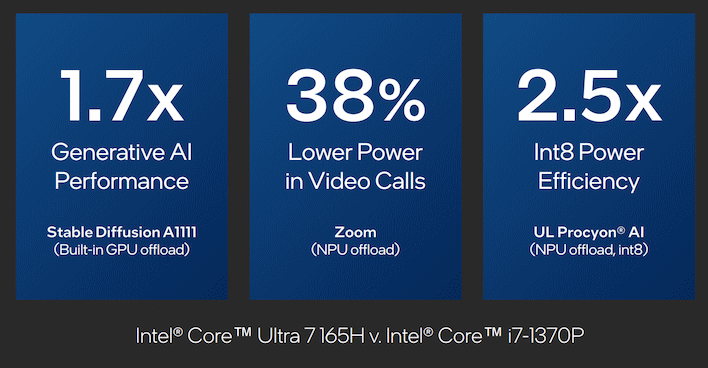
Intel has shipped systems with NPUs before, but this is the first time that the company has integrated one into a processor. It's likely that this will be standard practice going forward, so get used to seeing NPU specifications listed right along with CPUs and GPUs. They may not be as important to everyday computing use cases right now, but that's probably going to change quickly over the next few years.
In fact, we had a great preview discussion on that topic and more, with Dan Rogers and Robert Hallock from Intel, which you definitely should check out here...
And of course, if you're curious about the finer technical details of Meteor Lake, we've already done a deep dive on the architecture, which you can check out as well. If you're already familiar with the underlying details, then read on as we take a look at the very first tiled consumer processor from Intel in a retail-ready notebook from MSI, to see how it performs...
Meteor Lake Test Platform: The MSI Prestige 16 AI Evo
Intel's new Core Ultra processors target mobile applications, so it's not like Intel just sent us the CPU. Indeed, we have a whole laptop built around the Core Ultra 7 165H. This is actually the fastest Core Ultra processor available right now; there's a 45-watt Core Ultra 9 coming early next year, but for now, the the Core Ultra 7 165H is king.Above is the MSI Prestige 16 AI Evo. The name is kind of a mouthful, but it's descriptive: "Prestige" because this is a premium laptop, 16 because it has a 16" screen, AI because of the first-ever NPU in an Intel processor, and Evo because the machine is part of Intel's Evo platform. What does that mean? Why, we'll tell you, or rather, we'll let Intel tell you.

These are the requirements for a laptop bearing a Core Ultra processor to gain the coveted Evo badge. (KEI stands for "Key Experience Indicator".) Evo isn't new; the company introduced it in 2020 as a successor to Project Athena, which was itself a successor to the ultrabook program. In essence, laptops have to meet certain performance and feature enablement criteria to earn the badge. Just know that if you see "Evo Edition" on a laptop, it's probably going to deliver a solid experience and offer all of main features of Intel's mobile platform.
This list contains the full specifications for the MSI Prestige 16 AI Evo laptop that we used for our testing. It is by any reasonable definition a very nice laptop; the chassis is formed from an alloy of magnesium and aluminum to make it extremely rigid, but still fairly lightweight, and the backlit keyboard feels great to type on. The QHD+ IPS LCD is bright, sharp, and vivid, and while we probably wouldn't have ordered the system with the RAID 0 configuration that it shipped with, we can't deny the storage performance it offers (reads: 7.84 GB/sec, writes: 6.44 GB/sec.)
You saw the front already up above, so check out the back corner of the machine. From here you can see all of the ports; the other side has nothing but an exhaust vent for the slim blower fan and a Kensington lock socket. On the right side of the system you get a 3.5mm audio jack, status lights, an SD card reader, and a physical RJ-45 jack—something of a rarity in laptops this slim. Around back is where most of the connectivity lives, including the HDMI 2.1 port, a 10-Gbps USB Type-A port, and a pair of Thunderbolt 4 ports.
If you pop the bottom off the machine—no easy task, as it's secured with dozens of tiny plastic clips—you can access the two M.2 sockets, although ours were both filled from the factory. There really shouldn't be any other reason to get in here for the first couple of years, aside from perhaps re-pasting the super-slim CPU cooler; the RAM is soldered and there's no 2.5" drive bay.
It's marked prominently right there in the photo, but we have to point out that nearly half of the interior of this 16" laptop is occupied by a 99.9-Whr battery. We'll talk about this more on the last page, but that is explicitly the largest battery that they can legally put in a laptop if you want to fly with it. It certainly doesn't go to waste, but it absolutely isn't necessary, either. Again, you'll see what we mean on the last page.
Of course, this review isn't really about MSI's laptop, as nice as it is. That's partially because it's an engineering sample and may not represent the final product, and partially because we're really here to review Intel's new processor, not MSI's machine. All thanks go to MSI and Intel for providing the system so that we can put her through the paces, but that's enough eyeing up the pretty portable. Let's pop her lid and see what she can do...

